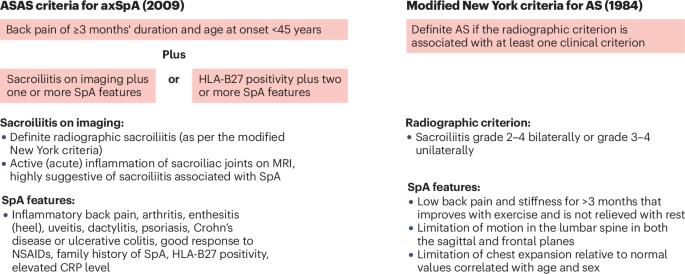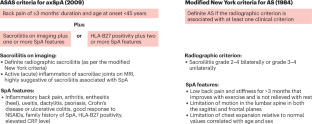Global epidemiology of spondyloarthritis
IF 32.7
1区 医学
Q1 RHEUMATOLOGY
引用次数: 0
Abstract
The worldwide epidemiology of axial spondyloarthritis (axSpA), psoriatic arthritis (PsA) and peripheral spondyloarthritis, as well as of HLA-B27 and other MHC and non-MHC genes in these diseases, is reviewed herein. The frequency of axSpA is highest in circumpolar groups (such as Sami people and certain Indigenous American groups) and lowest in those of Japanese and African ancestry. The same pattern holds for PsA, although the overall prevalence of PsA seems much lower in East Asia, where it is less frequent than axSpA. The prevalence of PsA in people with psoriasis is increased where rheumatological assessment was carried out and seems to be increasing over time. HLA-B27 remains the most important genetic factor in axSpA susceptibility, although its frequency is lower in African American, South American and Middle Eastern populations than in others. The presence of HLA-B27 and other HLA alleles seems to be important in discerning clinical subsets of SpA and PsA, particularly those characterized by acute anterior uveitis or by axSpA with psoriasis, although these HLA-B27 and other MHC and non-MHC associations are derived from genome-wide association studies and other chip-based studies in large populations. These studies have been carried out mainly in populations of European and East Asian ancestry, and similar data from Latin America, sub-Saharan Africa and South Asia are lacking. This under-representation is an unmet need in applying genetic factors to understand the pathogenesis, diagnosis and classification of SpA and PsA. This article provides a comprehensive overview of the epidemiology of spondyloarthritis — including axial spondyloarthritis, psoriatic arthritis and peripheral spondyloarthritis — worldwide, as well as the epidemiology of genetic factors implicated in these diseases.


脊柱炎的全球流行病学
本文综述了轴性脊柱炎(axSpA)、银屑病关节炎(PsA)和外周性脊柱炎的全球流行病学,以及HLA-B27等MHC和非MHC基因在这些疾病中的流行病学研究进展。axSpA的频率在环极地人群中最高(如萨米人和某些美洲土著群体),在日本和非洲血统人群中最低。同样的模式也适用于PsA,尽管PsA在东亚的总体患病率似乎要低得多,在那里它的发病率低于axSpA。在进行风湿病评估的银屑病患者中,PsA的患病率增加,并且似乎随着时间的推移而增加。HLA-B27仍然是影响axSpA易感性的最重要遗传因素,尽管其在非裔美国人、南美和中东人群中的频率低于其他人群。HLA- b27和其他HLA等位基因的存在似乎对辨别SpA和PsA的临床亚群很重要,特别是那些以急性葡萄膜炎或axSpA伴牛皮癣为特征的亚群,尽管这些HLA- b27和其他MHC和非MHC关联来自全基因组关联研究和其他基于芯片的大规模人群研究。这些研究主要是在欧洲和东亚血统的人群中进行的,缺乏来自拉丁美洲、撒哈拉以南非洲和南亚的类似数据。这种代表性不足是应用遗传因素了解SpA和PsA的发病机制、诊断和分类的未满足需求。
本文章由计算机程序翻译,如有差异,请以英文原文为准。
求助全文
约1分钟内获得全文
求助全文
来源期刊

Nature Reviews Rheumatology
医学-风湿病学
CiteScore
29.90
自引率
0.90%
发文量
137
审稿时长
6-12 weeks
期刊介绍:
Nature Reviews Rheumatology is part of the Nature Reviews portfolio of journals. The journal scope covers the entire spectrum of rheumatology research. We ensure that our articles are accessible to the widest possible audience.
 求助内容:
求助内容: 应助结果提醒方式:
应助结果提醒方式:


